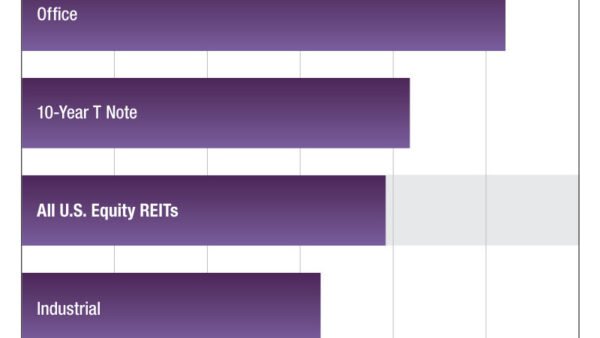The problems facing some CBD office properties have overshadowed the commercial real estate narrative, according to experts at the National Association of Real Estate Editors conference in Austin last week.
CBD office values have fallen 56 percent from their peak, MSCI-Real Assets Chief Economist Jim Costello told the journalists and publicists. But that is only one slice of the industry based on the limited number of transactions that have taken place. “That’s not healthy no matter how you paint it,” Costello noted. “There is pain underway, and there is more pain to come for these assets, but that’s not every commercial property type.”
Some sectors, like apartments and industrial, meanwhile, are on much stronger footing, Costello said. “If we look at how the public market values these companies, not just how the prices of the assets are going, we’ve already turned the corner,” he explained.
READ ALSO: Office Sector Adapts Amid Market Shifts
Further, Costello said, concerns about maturing CBD office debt have been generalized to cast doubt on all banks, including small banks, which did not make loans on large urban office properties. “So, the banking sector people are overstating, at times. the degree to which this is an issue because they’re painting with a broad brush,” he said.
Flight to quality
During a later panel, a few office owners made the case for distinguishing between office and the better office properties. So, while all office owners are concerned with absorption and getting tenants back to the office, some are faring better than most.
“Flight to quality—it’s real,” said Brett Merz, senior vice president for Asset Management at KBS Realty Advisors. “It’s not necessarily a new concept. I do believe it has momentum and keeps going further.”
In some of the company’s submarkets, Merz said, the difference between vacancies in a “tier-one asset” and a non-tier-one asset can be 6 percent, and asking rates can be 45 percent higher tier-one assets.
Ace Roman, senior vice president & co-head of asset management for Granite Properties, agreed that location really matters today. Even older assets in strong mixed-use neighborhoods are benefiting from flight to quality, he noted. In 2022, Granite purchased First Avenue Plaza, an 80s-vintage office complex in Denver’s Cherry Creek submarket. Since then, the company has increased occupancy at the two-building property from 90 percent to 97, and they have pushed rents 20 percent, Roman said.
“The building vintage is important, but it’s not the end all,” Roman said.
And flight to quality encompasses more than just the property, said Alex Hancock, head of national sales & leasing for Howard Hughes Holding Inc. “Flight to quality is quality amenities, quality buildings, quality landlords as well that have the ability to transact,” he said.
Hancock also stressed the importance of mixed-use environments. Being able to offer tenants these “small cities” is “especially powerful” today,” he said.
So, if there is such a shortage of premium space, could new Class A development be on the horizon? Not likely, Roman said. A developer would need to be 60 percent pre-leased before approaching a lender and, even then, the interest rate would be 9 or 10 percent and you have to charge a rent that is unattainable today. “I think a number of those factors will converge to a point, in maybe two, maybe three, maybe four years, building will make sense, and that will be that Class A rents rise and the debt markets will be a little more open to office.”
https://www.commercialsearch.com/news/wp-admin/post.php?post=1004714843&action=edit






